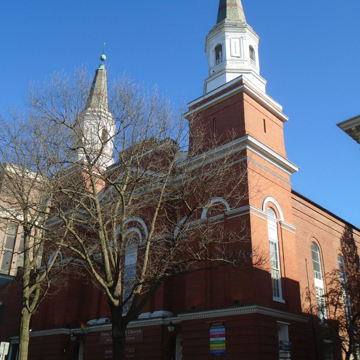Wall's design could be considered a late colonial survival or an early Colonial Revival, but either way it marks the continuing importance of the Revolutionary heritage in Lancaster. The pair of towers suggests the usual German two-towered facade, but the facade's details and both towers are diminutives of Abraham Colladay's steeple for the Lutheran congregation ( LA14). Baltimore architect Wall proposed the two-towered facade on the grounds that greater effect could be achieved for less cost than a single great tower. The interior is notable for its shallow plaster dome that spreads sound in the nearly square hall that is richly hued in the Victorian mode.
You are here
First Reformed Church United Church of Christ
If SAH Archipedia has been useful to you, please consider supporting it.
SAH Archipedia tells the story of the United States through its buildings, landscapes, and cities. This freely available resource empowers the public with authoritative knowledge that deepens their understanding and appreciation of the built environment. But the Society of Architectural Historians, which created SAH Archipedia with University of Virginia Press, needs your support to maintain the high-caliber research, writing, photography, cartography, editing, design, and programming that make SAH Archipedia a trusted online resource available to all who value the history of place, heritage tourism, and learning.















